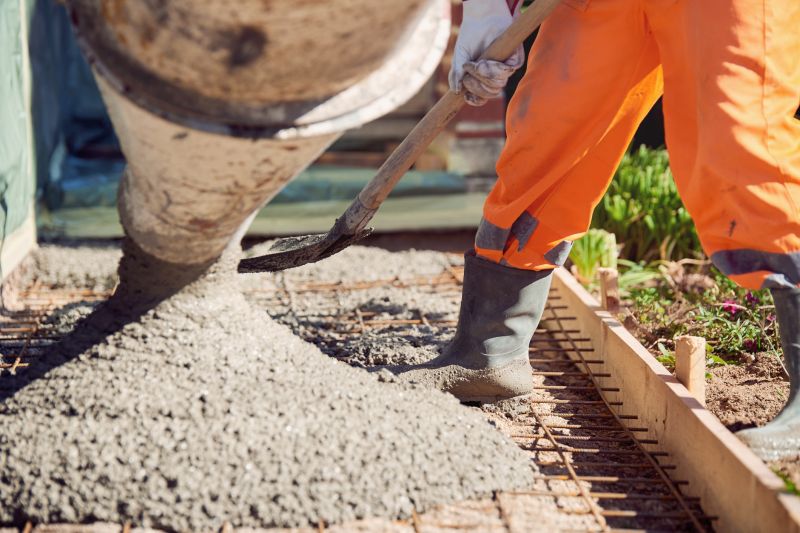Essential Products for Concrete Installation Success
Identify the key tools and materials that ensure precise, durable, and high-quality concrete work every time.
 Concrete installations are fundamental to a variety of construction and renovation projects, ranging from residential driveways to commercial flooring and decorative surfaces. Selecting the right products ensures durability, safety, and a professional finish. When working on concrete projects, it is important to understand the different types of tools and materials available, their specific purposes, and how they can enhance the quality of your work. Proper preparation, application, and finishing products contribute significantly to the longevity and appearance of concrete structures.
Concrete installations are fundamental to a variety of construction and renovation projects, ranging from residential driveways to commercial flooring and decorative surfaces. Selecting the right products ensures durability, safety, and a professional finish. When working on concrete projects, it is important to understand the different types of tools and materials available, their specific purposes, and how they can enhance the quality of your work. Proper preparation, application, and finishing products contribute significantly to the longevity and appearance of concrete structures.
Top Overall Option
Concrete Mixing and Pouring System
A comprehensive concrete mixing and pouring system offers a versatile solution for various project sizes. It typically includes durable mixers, adjustable pouring chutes, and accessories designed to ensure consistent mixture quality and efficient application. Such systems are valued for their ability to streamline workflows, reduce manual labor, and produce uniform results across different types of concrete installations.
Types of Products For Concrete Installations
Concrete Mixers
Devices designed to blend concrete ingredients thoroughly for consistent quality and workability.
Concrete Vibrators
Tools used to eliminate air pockets and ensure proper compaction of poured concrete.
Concrete Edgers
Tools that help create smooth, rounded edges along concrete surfaces for a finished look.
Trowels and Floats
Hand tools used for smoothing and finishing concrete surfaces.
Form Liners and Molds
Products used to shape and pattern concrete surfaces for decorative or structural purposes.
Curing Compounds
Solutions applied to concrete to retain moisture and promote proper curing.
Sealants and Surface Protectors
Products that provide a protective barrier to enhance durability and appearance.
Concrete Repair Patches
Materials designed to fix cracks, chips, or surface damage in existing concrete.
Waterproofing Membranes
Layers applied to prevent water infiltration in concrete structures.
Anchor Bolts and Fasteners
Hardware used to secure structures to concrete foundations.
Surface Texturing Tools
Tools used to add grip or decorative patterns to concrete surfaces.
Concrete Cutting Saws
Power tools designed for precise cutting and shaping of hardened concrete.
Joint Fillers and Sealants
Materials used to fill expansion and control joints in concrete slabs.
Surface Prep Equipment
Tools and machinery used to clean and prepare concrete surfaces before finishing.
Reinforcement Mesh and Rebar
Materials used to strengthen concrete structures and improve load-bearing capacity.
Popular Choices
Compact mixers suitable for small to medium projects, offering mobility and ease of use.
Vibrators that facilitate proper compaction, available in various sizes for different applications.
Hand tools that help achieve clean, professional-looking edges on poured concrete.
Essential hand tools for smoothing and finishing concrete surfaces.
Products that help remove forms easily and prevent concrete from sticking.
Materials that help maintain optimal moisture levels during curing.
Surface protectors that enhance appearance and provide resistance to stains and wear.
Materials used for filling and sealing cracks in existing concrete surfaces.
Applied to prevent water ingress in foundations and slabs.
Tools that facilitate quick and secure tying of reinforcement bars.
Tools used to add decorative patterns or slip-resistant textures.
Power tools for shaping and finishing concrete surfaces.
Materials designed to accommodate movement and prevent cracking.
Equipment used to clean and prepare concrete surfaces for finishing or coating.
Steel mesh used to improve structural integrity of concrete slabs.
Power tools for precise cuts in hardened concrete.
Flexible sealants for joints and cracks.
In the Bronx area, where construction and renovation projects are diverse, having access to reliable and effective concrete installation products is essential. Whether you are a professional contractor or a DIY enthusiast, understanding the range of available products can help you make informed decisions. From mixing and pouring to curing and finishing, each phase requires specialized products that meet industry standards and safety regulations.
Investing in high-quality products for concrete installation can also streamline workflows, reduce waste, and improve overall results. It is advisable to consider the specific requirements of your project, including load capacity, surface finish, environmental conditions, and budget constraints. Properly selected tools and materials not only facilitate efficient work but also contribute to a safer working environment.
This guide provides an overview of the key product categories for concrete installations, highlights a top overall product choice, and lists trending options popular among users in the Bronx, NY. By understanding these options, you can better plan your project and choose products that align with your goals for durability, appearance, and ease of use.
Key Buying Considerations
- Project scope and size to determine the appropriate product capacity and features.
- Compatibility of tools and materials with existing equipment or systems.
- Ease of use and ergonomic design for safety and efficiency.
- Durability and material quality to withstand job site conditions.
- Specific application requirements, such as load-bearing capacity or surface finish.
- Compatibility with environmental conditions, including moisture and temperature.
- Ease of maintenance and availability of replacement parts.
- Safety features and compliance with industry standards.
- Budget constraints balanced with quality and performance.
- Availability of accessories and additional tools for expanded functionality.
- User reviews and professional recommendations for reliability.
- Brand reputation and after-sales support.
- Portability and storage considerations for equipment and materials.
- Time efficiency features to help meet project deadlines.
- Environmental considerations, such as dust control or noise levels.
